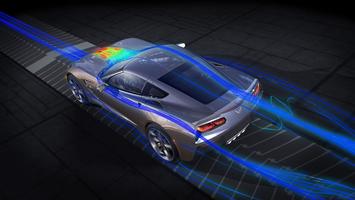I confess to be continually surprised at the lack of understanding of Computational Fluid Dynamics by some (repeat, some) test engineers and managers. Not that they are not good at their jobs, but it comes up often enough that I have had to issue and edict that background information must be included with CFD results reports. The test equivalent of this is to include the specs of a wind tunnel with test reports (such as fan power, turbulence level, test section pressure gradient, etc). Sure, we have CFD models of wind tunnels, but unless we are doing validation, why add the unnecessary computational expense? It’snot until you tell them this that it “clicks.” Rarely, I do need to pull out the whole “you realize that a wind tunnel test is a simulation as well don’t you?” Thankfully, that is happening less often.

Image: Chevrolet Corvette Stingray in Wind tunnel - gmotors.co.uk
I think this goes back to just how each discipline has evolved over the years. Experimental testing is a fully developed discipline, where test engineers do not build or typically even operate the facilities they use. The wind tunnels or chassis-dynos are “there” and simply a resource to use, get some results, and “pass.” Or if the test does not“pass,” based on the results, make changes and test again. Test engineers also do not usually build their test vehicles, at least in the automotive industry.They might determine the data acq (pitot holes or thermocouples, for example),but not actually build them – and especially not the full scale passenger cars or light trucks of the automotive industry. CFD analysts on the other hand, do in fact, build their own models. We have been trained to do this from the very beginning. The first task a new CFD analyst is given is to help out building a CFD model and then later setting up and solving CFD models. This leads us to intimately understanding how the CFD model is constructed and setup. This, in turn, leads to a pretty good understand of the start-to-finish Computational Fluid Dynamics modeling process.
Perhaps I am waxing poetic, but this – the mismatch in understanding of how things work – also, I think, leads to a fundamental difference in understand how and why we do experimental or computational testing [1]. Also, now that I am in management, from time to time I get questions on why this particular CFD model is valid and if it reflects the“actual situation” by executives. I should note that executives are not former Computer-Aided Engineering analysts. By “actual situation,” they usually mean the “test” as opposed to the “real world,” which, for the most part, is what we model. This, then,presents an opportunity for the CAE community to educate the test community: Is there some way we could bring our understanding of repeatability and exactness to the test community?
Thoughts or comments? Drop me an e-mail at: thecaeguy{at}nafems{dot}org. (The e-mail format is to – hopefully – deter the auto spammers that just troll for on-line e-mail addresses; yes, I have had problems with this.)
If you’ll remember from way back from one of my first columns, I think of CAE as computational testing.




